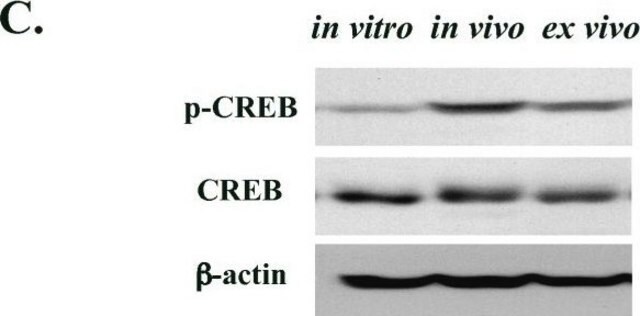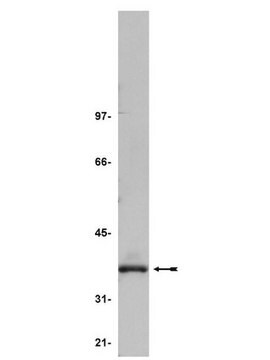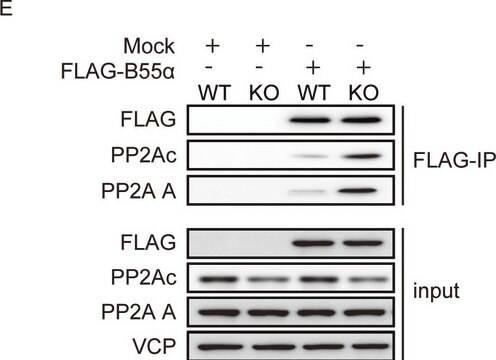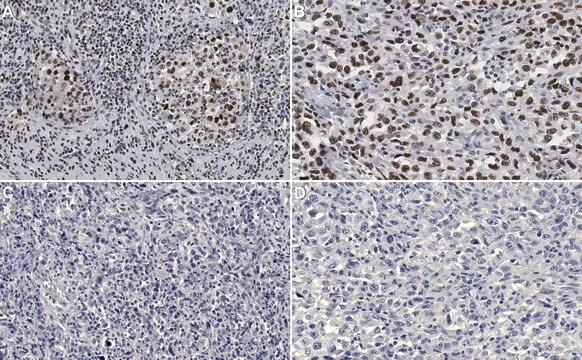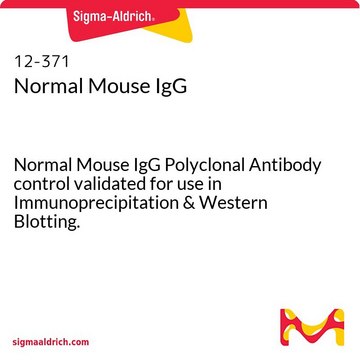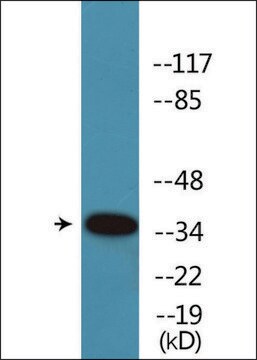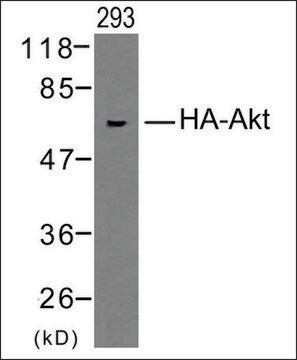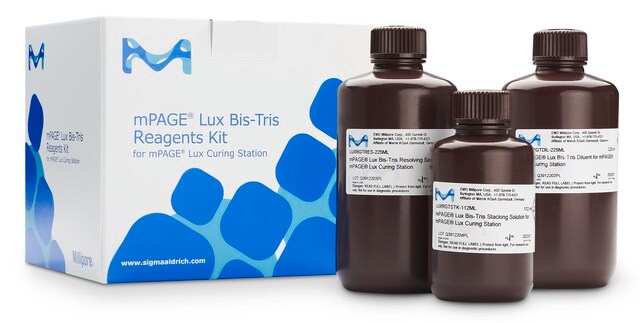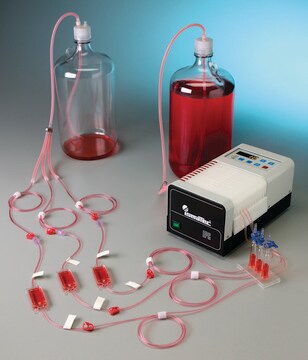05-807
Anti-phospho-CREB (Ser133) Antibody, clone 634-2
clone 634-2, Upstate®, from mouse
Sinónimos:
active transcription factor CREB, cAMP responsive element binding protein 1, cAMP-response element-binding protein-1, transactivator protein
About This Item
Productos recomendados
origen biológico
mouse
Nivel de calidad
forma del anticuerpo
purified antibody
tipo de anticuerpo
primary antibodies
clon
634-2, monoclonal
reactividad de especies
rat, mouse
fabricante / nombre comercial
Upstate®
técnicas
immunocytochemistry: suitable
immunofluorescence: suitable
western blot: suitable
isotipo
IgG1κ
Nº de acceso NCBI
Nº de acceso UniProt
Condiciones de envío
dry ice
modificación del objetivo postraduccional
phosphorylation (pSer133)
Información sobre el gen
human ... CREB1(1385)
Descripción general
Especificidad
Inmunógeno
Aplicación
1:500 to 1:32,000 dilutions of this lot detected CREB peptide containing phosphoserine 133. The antibody did NOT recognize the nonphosphorylated peptide of the same sequence
Immunofluorescence / Immunocytochemistry:
This antibody has been reported by an independent laboratory to detect phospho-CREB (Ser133) using immunofluorescence.
Epigenetics & Nuclear Function
Transcription Factors
Calidad
Western Blot Analysis:
A 1:1,000 to 1:4,000 dilution of this lot detected phospho-CREB (Ser 133) in RIPA lysates from forskolin treated rat PC-12 and mouse 3T3/A31 cells (Figure A).
Descripción de destino
Forma física
Almacenamiento y estabilidad
Nota de análisis
Human breast carcinoma, forskolin- and FGF-treated SK-N-MC cell extracts.
Otras notas
Información legal
Cláusula de descargo de responsabilidad
¿No encuentra el producto adecuado?
Pruebe nuestro Herramienta de selección de productos.
Opcional
Código de clase de almacenamiento
10 - Combustible liquids
Clase de riesgo para el agua (WGK)
WGK 1
Certificados de análisis (COA)
Busque Certificados de análisis (COA) introduciendo el número de lote del producto. Los números de lote se encuentran en la etiqueta del producto después de las palabras «Lot» o «Batch»
¿Ya tiene este producto?
Encuentre la documentación para los productos que ha comprado recientemente en la Biblioteca de documentos.
Nuestro equipo de científicos tiene experiencia en todas las áreas de investigación: Ciencias de la vida, Ciencia de los materiales, Síntesis química, Cromatografía, Analítica y muchas otras.
Póngase en contacto con el Servicio técnico